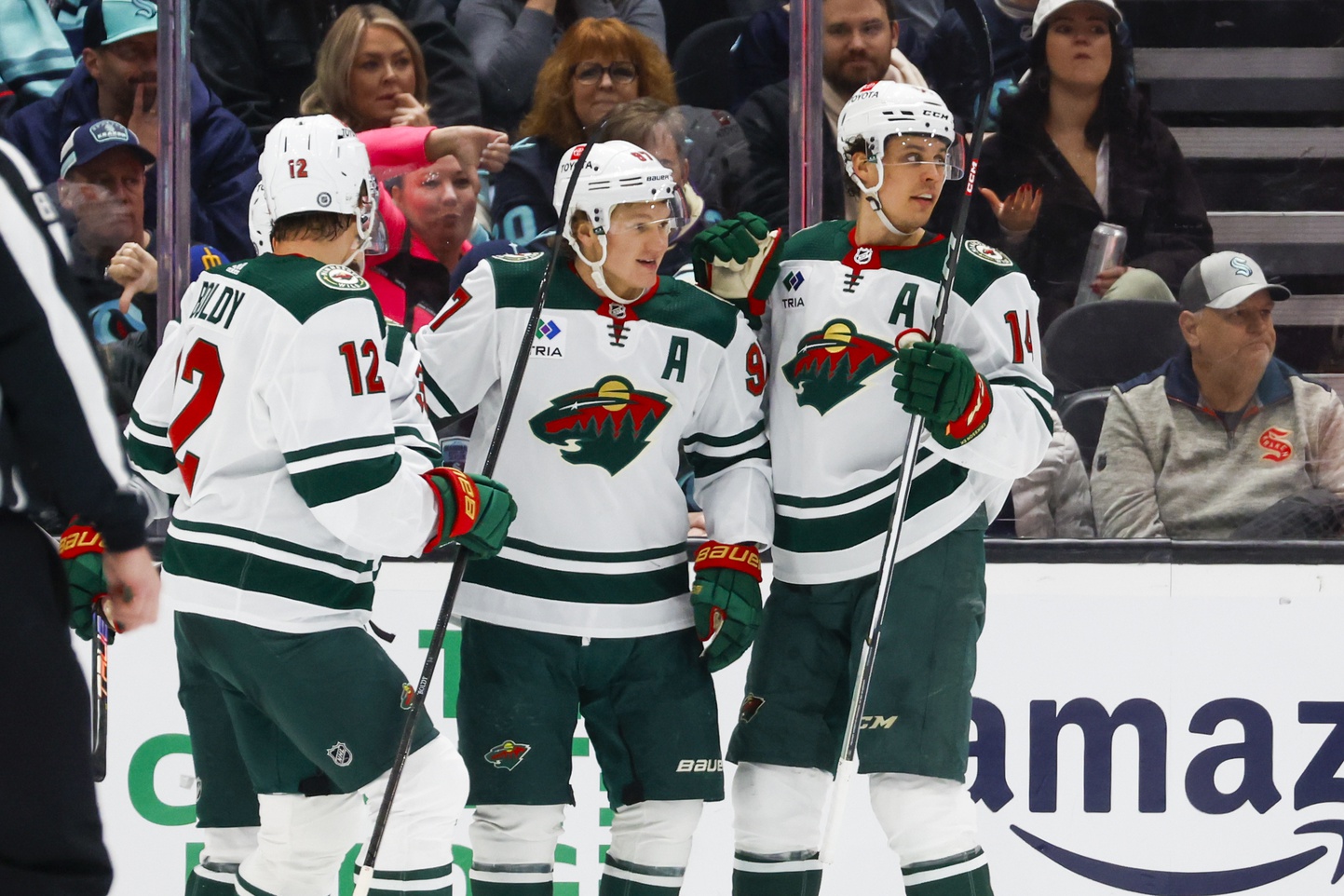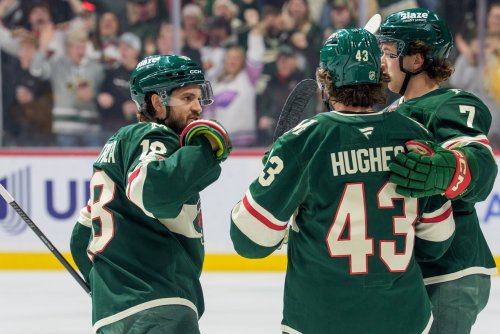
A big focus of the Minnesota Wild's offseason is improving their secondary scoring. At his postseason availability, Bill Guerin told the media, "I could have done a better job at insulating...our top players, creating more depth within the organization. I think that’s something we fell short on."
No one will argue with that. Kirill Kaprizov, Joel Eriksson Ek, and Matt Boldy combined for 105 of the Wild's 248 goals, or 42.3% of their total. At 5-on-5, that trio scored 53 of Minnesota's 155 goals (35.2% of the total). Marco Rossi (18) and Ryan Hartman (12) were the only other Wild players who scored 10 or more goals.
The Wild have to address their depth. They cannot be a one-line team next year and expect to succeed. Or at least, expect Kaprizov to agree to spend the next part of his career carrying a club that can't find a second punch.
While the 2023-24 season seems like a waste (and in many ways was), new coach John Hynes figured out something that avoids chalking up this season as a total loss. It turns out that putting Kaprizov, Eriksson Ek, and Boldy together is a look that can frighten NHL defenses for years to come.
Hynes' predecessor, Dean Evason, tried (and for a long time, succeeded) to bolster Minnesota's depth by deploying a spread-the-wealth philosophy in his lines. Kaprizov, Eriksson Ek, and Kevin Fiala (followed by Boldy after the Fiala trade) had their lines to carry, and they were largely good enough to make it work.
But as the Wild's depth started to erode, that methodology had to change. Last year, Evason put Eriksson Ek on Boldy's line to break Boldy out of a half-year-long sophomore slump. But Evason never could quite bring himself to press the button to load up the top line.
Hynes did and never looked back. The Wild's top trio played 374 5-on-5 minutes together and out-scored opponents 30-18 over that time. Of the 74 forward lines who played 200-plus minutes at 5-on-5, Minnesota's loaded top line scored 4.81 goals per hour. The only line that scored more frequently was when the Edmonton Oilers loaded Connor McDavid, Leon Draisaitl, and Zach Hyman on their top line.
As great as that is, there's another level this line can reach. For one, they could play together the full season, so something like 600-plus 5-on-5 minutes together rather than fewer than 400. That'd help. So would Boldy's transition from a 30-goal guy to a Kaprizovesque force. But even if there's no growth in chemistry or skills, there are reasons to believe Minnesota's top line can improve next year.
But barring a further Boldy breakthrough, that won't come through scoring. It's really hard to do better than notching 4.81 goals per hour at 5-on-5. It's also not far-fetched to think they'll stay around that level.
Minnesota's top line registered 3.53 expected goals per hour at 5-on-5, which seems like a big step back from 4.81. It is, but that doesn't mean they'll come crashing back to earth. Their expected goals rate still ranks 12th among those 74 forward lines, making them an elite scoring chance-generating unit.
That jump from elite scoring chances to jaw-dropping jaw totals is possible because of an absurd 12.9% on-ice shooting percentage. That's not just their own shooting percentages; that's theirs combined with whatever defensemen are skating with them. The league average is 8.6.
Normally, this is a red flag. However, with these three, their influence on shooting percentage backs this up to some degree. 337 forwards have played 2000-plus 5-on-5 minutes since Kaprizov joined the league. Kaprizov ranks 17th with a 10.6% on-ice shooting percentage. Eriksson Ek and Boldy are tied for 81st with a 9.4 on-ice shooting percentage.
Shooting spurts can come and go, but over a long enough period, you're making your own luck if you're near the top of the league. Kaprizov definitely positively influences shooting percentage, and it's very likely that Eriksson Ek and Boldy also do.
But the real growth for this line is going to come defensively. The trio gave up 2.88 goals per hour at 5-on-5, which is quite a lot. With how the Wild's year went, though, you have to ask whether that's because of them or Minnesota's struggles in net.
Spoiler: It's because of their goalies. The goaltending behind this line was only able to muster an .894 save percentage at 5-on-5. It's hard to get much worse than that. Considering the goaltending behind them, it took a pretty spectacular defensive performance to limit their 5-on-5 goals allowed to 18.
Together, Kaprizov, Boldy, and Eriksson Ek only surrendered 2.12 expected goals allowed. That's as shutdown as it gets, ranking 11th among those 74 forward lines. There were no lines in the NHL that out-generated and out-suppressed scoring chances for and against, respectively.
They're a fantastic trio, no matter how you slice it. They shot lights-out to the point where they canceled out their goaltending's flaws, getting 62.5% of the goals at 5-on-5. What was their expected goal percentage? An identical 62.5%, good for fifth in the NHL among those 74 forward lines.
Keeping up that shooting and asking the goaltending to bounce back are both "ifs," but each of these top-line players has what it takes to shoot for a high percentage for a season. If their goaltending can be average or even slightly below, the minimum expectation should be controlling the scoring flow like they did last year. The upside is through the roof.
That shouldn't, and won't be, any reason to try to ignore Minnesota's secondary scoring issues. But a half-season of this top line in action was nearly enough to carry a flawed Wild team into the playoffs. If Minnesota can get a full season from them, with just a bit of support? That's a scary thought for the Western Conference.
Think you could write a story like this? Hockey Wilderness wants you to develop your voice, find an audience, and we'll pay you to do it. Just fill out this form.
-
 4
4







Recommended Comments
Join the conversation
You can post now and register later. If you have an account, sign in now to post with your account.
Note: Your post will require moderator approval before it will be visible.